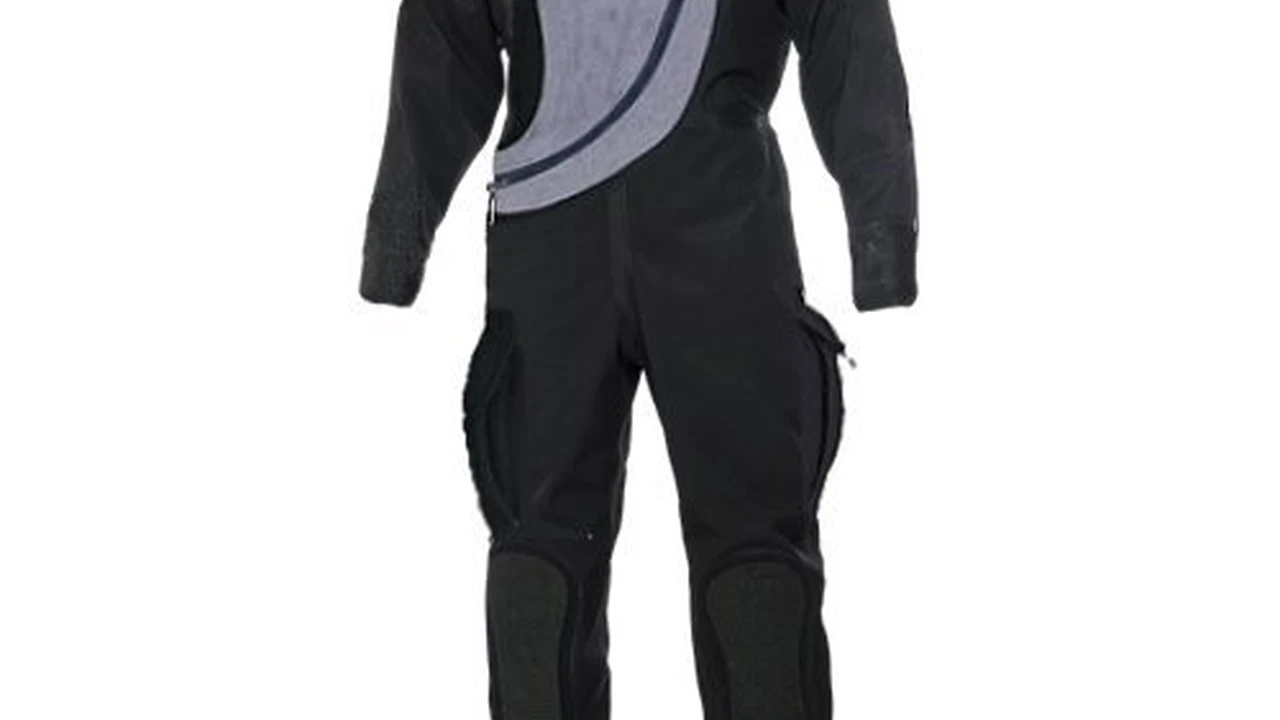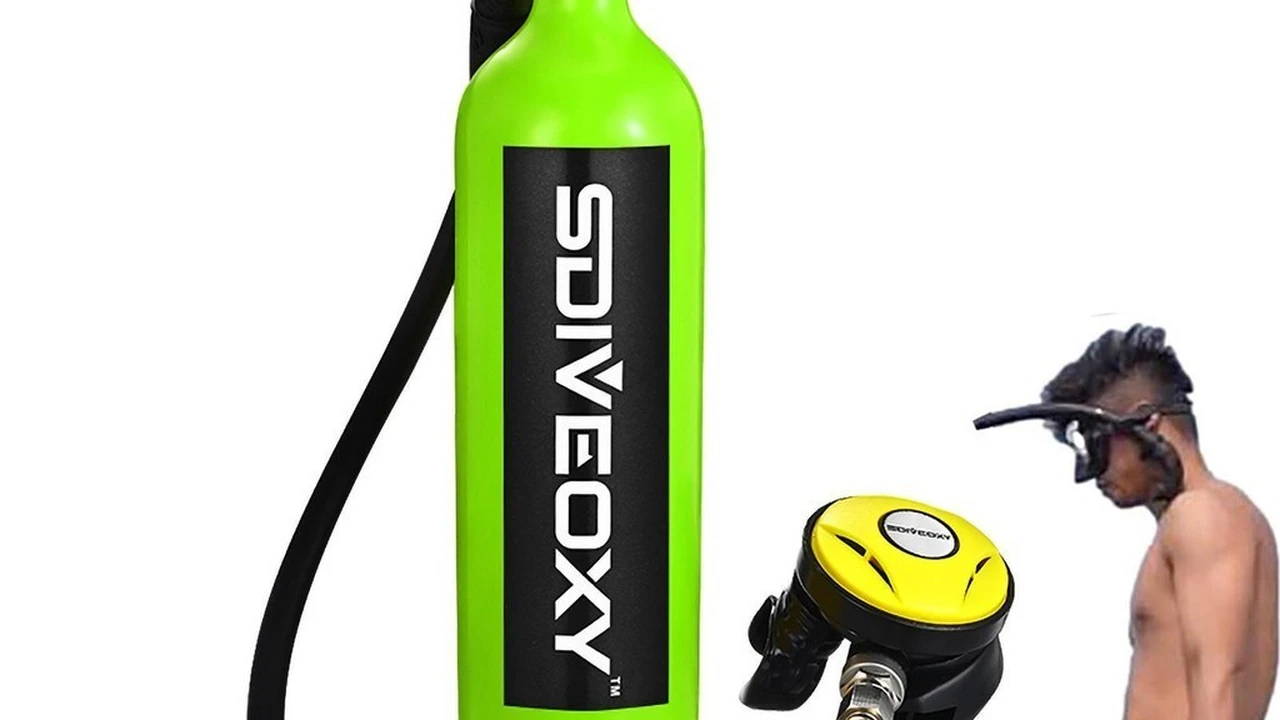Comparing Wet Suits vs Dry Suits for Scuba Diving
Essential tips and best practices for cleaning, storing, and maintaining your scuba equipment.

Maintaining Your Scuba Diving Gear for Longevity
Why Proper Scuba Gear Maintenance Matters for Divers
Hey there, fellow divers! We all love the thrill of exploring the underwater world, right? But let's be honest, that amazing experience relies heavily on our gear. Your scuba equipment isn't just a collection of fancy gadgets; it's your lifeline, your comfort, and your ticket to countless adventures. Think about it: your regulator delivers the air you breathe, your BCD keeps you buoyant, and your wetsuit keeps you warm. If any of these fail, your dive can go from fantastic to frightening in a heartbeat. That's why proper scuba gear maintenance isn't just a recommendation; it's an absolute necessity. It’s about safety, extending the life of your expensive investment, and ensuring every dive is as enjoyable as the last. Neglecting your gear can lead to costly repairs, premature replacements, and, most importantly, potential hazards underwater. So, let's dive deep into how to keep your precious equipment in tip-top shape.
Immediate Post Dive Care for Scuba Equipment
The moment you surface, the maintenance process begins. This immediate post-dive care is crucial for preventing corrosion and salt buildup. First things first, rinse everything thoroughly with fresh water. And I mean everything. Your BCD, regulator, wetsuit, fins, mask, snorkel, dive computer – the whole kit and caboodle. Saltwater is incredibly corrosive, and if left to dry on your gear, it can crystallize and cause significant damage to seals, O-rings, and metal components. For your regulator, make sure the dust cap is securely in place before rinsing to prevent water from entering the first stage. Gently press the purge button a few times while rinsing to flush out any salt crystals from inside the second stage. For your BCD, inflate it fully, then rinse it inside and out. You can even add a small amount of fresh water inside the bladder through the low-pressure inflator, swish it around, and then drain it through the dump valves. This prevents mold and mildew from growing inside. Your wetsuit should be rinsed thoroughly, both inside and out, and then hung to dry on a wide hanger, away from direct sunlight. Don't forget your dive computer! Rinse it well and let it air dry. For masks and fins, a simple rinse is usually sufficient. The key here is to be meticulous. Don't rush this step; it's the foundation of good gear maintenance.
Drying and Storage Best Practices for Dive Gear
Once your gear is rinsed, proper drying and storage are the next critical steps. Air drying is always best, but make sure it's in a shaded, well-ventilated area. Direct sunlight can degrade neoprene, plastics, and rubber over time, leading to cracking and fading. For wetsuits, hang them on a wide hanger to prevent creasing, which can damage the neoprene. Regulators should be hung loosely, not coiled tightly, to avoid kinking hoses. BCDs should be partially inflated and hung up to allow air circulation. Once everything is completely dry – and I mean bone dry – it's time for storage. Store your gear in a cool, dry place, away from extreme temperatures and direct sunlight. Avoid storing gear in airtight containers for extended periods, as this can trap moisture and encourage mold growth. For regulators, consider storing them in a dedicated regulator bag to protect them from dust and accidental damage. Your dive computer should be stored in a protective case, and if you're not diving for a while, it's a good idea to remove the battery to prevent leakage. Fins and masks can be stored in their original bags or a gear bag. Proper storage not only protects your gear but also keeps it organized and ready for your next adventure.
Regular Inspections and Servicing for Scuba Equipment Longevity
Beyond the routine post-dive care, regular inspections and professional servicing are non-negotiable. You should visually inspect your gear before and after every dive. Look for any signs of wear and tear: cracks in hoses, frayed straps, corroded metal parts, or sticky buttons. Pay close attention to O-rings on your tank valve and regulator connections; these tiny rubber rings are vital for preventing leaks. If you spot any issues, address them immediately. Don't wait until your next dive to fix a problem. For professional servicing, your regulator and BCD should be serviced annually or every 100 dives, whichever comes first. This isn't just a suggestion; it's often a requirement by manufacturers to maintain your warranty. During a service, a certified technician will disassemble, clean, inspect, and replace worn parts like O-rings, seats, and filters. They'll also check for proper function and calibrate your equipment. Think of it like getting your car serviced; you wouldn't skip that, would you? Regular servicing prevents minor issues from becoming major, expensive problems and ensures your gear is always performing optimally and safely. Don't try to service complex components like regulators yourself unless you are a certified technician; you could cause more harm than good.
Specific Care for Different Scuba Gear Components
Regulator Care and Maintenance Tips for Divers
Your regulator is arguably the most critical piece of gear. After rinsing, ensure the dust cap is on. Never press the purge button when the regulator is not pressurized by a tank and submerged in water, as this can draw water into the first stage. Store it loosely coiled, not tightly wound. Annual servicing by a certified technician is paramount. They'll replace O-rings, check intermediate pressure, and ensure all components are functioning correctly. For example, brands like Aqua Lung, Scubapro, and Mares all have specific service kits and recommended service intervals. A typical regulator service might cost anywhere from $50 to $100, plus parts. Investing in a good regulator bag, like the Scubapro Regulator Bag (around $40-60), can protect it during transport and storage.
BCD Care and Maintenance for Buoyancy Control Devices
The BCD needs internal and external rinsing. To rinse the inside, add about a cup of fresh water through the low-pressure inflator, inflate the BCD fully, slosh the water around, and then drain it through all dump valves. Repeat until the water runs clear. Hang it partially inflated to dry. Check the inflator hose for cracks and ensure all D-rings and buckles are secure. Periodically, check the dump valves for proper sealing. Brands like Cressi and Zeagle offer durable BCDs, and their maintenance is similar across the board. A BCD service, which often includes checking the inflator mechanism and dump valves, might cost around $30-50.
Wetsuit and Dry Suit Care for Thermal Protection
Wetsuits should be rinsed thoroughly inside and out with fresh water. Use a wetsuit-specific cleaner, like McNett Wetsuit and BCD Cleaner (around $10-15), occasionally to remove odors and bacteria. Hang them on a wide hanger, away from direct sunlight. For dry suits, pay extra attention to the zippers and seals. Lubricate zippers regularly with wax or silicone grease (e.g., TiZip Lubricant, around $10). Check neck and wrist seals for tears or cracks; these are often replaceable. Store dry suits loosely folded or hung to prevent creasing. Brands like Bare and Fourth Element are known for their quality dry suits, and proper care significantly extends their lifespan. Replacing a dry suit seal can cost $50-150 per seal, depending on the type.
Mask, Fins, and Snorkel Care for Underwater Vision and Propulsion
These are relatively low maintenance. Rinse them with fresh water after every dive. For masks, avoid leaving them in direct sunlight, as this can degrade the silicone skirt. Store them in their protective case to prevent scratches to the lens. Fins should be rinsed and stored flat or hung. Snorkels just need a good rinse. For example, a high-quality mask like the Atomic Aquatics Frameless Mask (around $100-120) will last for years with proper care. Fins like the Scubapro Seawing Nova (around $200-250) also benefit from simple rinsing and proper storage.
Dive Computer Care and Battery Management for Safety
Rinse your dive computer with fresh water and let it air dry. Avoid using harsh chemicals. Check the battery compartment for corrosion. If you're not diving for an extended period, consider removing the battery to prevent leakage. Always follow the manufacturer's recommendations for battery replacement. Some computers, like the Shearwater Perdix AI (around $1200-1500), have user-replaceable batteries, while others, like the Garmin Descent Mk2i (around $1400-1600), require professional service for battery changes. A professional battery change can cost $30-70, including a pressure test.
Common Scuba Gear Problems and Troubleshooting for Divers
Regulator Freezing and How to Prevent It
Regulator freezing is a serious issue, especially in cold water. It occurs when moisture inside the regulator freezes, causing it to free-flow. Prevention is key: ensure your tank is filled with dry, clean air. Avoid pressing the purge button unnecessarily on the surface. If it starts to free-flow underwater, try to breathe slowly and calmly, and ascend safely. Brands like Mares and Aqua Lung offer cold-water specific regulators designed to resist freezing.
BCD Leaks and How to Identify Them
A leaking BCD can be frustrating. Common culprits include leaky dump valves, a faulty inflator mechanism, or punctures in the bladder. To check for leaks, inflate the BCD fully and submerge it in a tub of water, looking for bubbles. Small punctures can sometimes be repaired with a patch kit (e.g., AquaSeal Repair Kit, around $15-20). For valve or inflator issues, professional servicing is usually required.
Mask Fogging Solutions for Clear Vision
Mask fogging is annoying but usually easy to fix. First, ensure you've properly pre-treated a new mask by scrubbing the inside of the lens with toothpaste to remove the silicone residue. Before each dive, use an anti-fog solution (e.g., Sea Drops Anti-Fog, around $8-12) or simply spit and rinse. Ensure your mask fits properly and isn't too tight, which can cause leaks and fogging.
Wetsuit Tears and Repair Techniques
Small tears in wetsuits are common. You can repair them yourself using neoprene glue (e.g., AquaSeal Neoprene Cement, around $10-15). Clean the area, apply glue to both edges of the tear, let it get tacky, and then press them together firmly. For larger tears or seam separations, professional repair might be necessary.
Advanced Scuba Gear Maintenance Tips for Experienced Divers
DIY Minor Repairs and When to Seek Professional Help
While annual servicing is a must, some minor repairs can be done at home. Replacing a worn O-ring on your tank valve or hose is a simple task if you have the right tools and spare O-rings (a basic O-ring kit costs around $15-25). You can also replace fin straps or mask straps. However, for anything involving the internal workings of your regulator, BCD inflator, or dive computer, always defer to a certified technician. Attempting complex repairs without proper training can compromise your safety and void warranties.
Travel Tips for Protecting Your Scuba Gear
When traveling, pack your gear smartly. Use a padded gear bag (like the Akona Roller Bag, around $150-200) to protect delicate items. Disassemble your regulator from the first stage and pack it securely. Consider bringing a small repair kit with spare O-rings, zip ties, and a multi-tool. Always carry your dive computer and regulator in your carry-on luggage to prevent loss or damage. This is especially important for expensive items like the Shearwater Teric dive computer (around $1000-1200).
Environmental Considerations for Gear Maintenance
Be mindful of the products you use. Opt for biodegradable cleaners and avoid harsh chemicals that can harm marine life when rinsed into the ocean. Dispose of old batteries responsibly. Support dive centers and manufacturers that prioritize eco-friendly practices. Your gear maintenance routine can contribute to the health of the very environment you love to explore.
The Long Term Benefits of Diligent Scuba Gear Care
So, why go through all this trouble? The benefits are clear and significant. Firstly, enhanced safety. Well-maintained gear is reliable gear, reducing the risk of equipment malfunctions underwater. Secondly, extended lifespan of your investment. Scuba gear isn't cheap, and proper care can significantly prolong its usability, saving you money in the long run. Thirdly, optimal performance. Gear that's regularly cleaned and serviced will perform better, making your dives more comfortable and enjoyable. You'll have consistent air delivery, precise buoyancy control, and clear vision. Finally, it fosters a sense of responsibility and connection to your equipment. When you take care of your gear, it takes care of you. It's a small effort that pays huge dividends in terms of safety, enjoyment, and the longevity of your underwater adventures. So, make gear maintenance a non-negotiable part of your diving routine, and enjoy countless more dives with confidence and peace of mind.
:max_bytes(150000):strip_icc()/277019-baked-pork-chops-with-cream-of-mushroom-soup-DDMFS-beauty-4x3-BG-7505-5762b731cf30447d9cbbbbbf387beafa.jpg)






